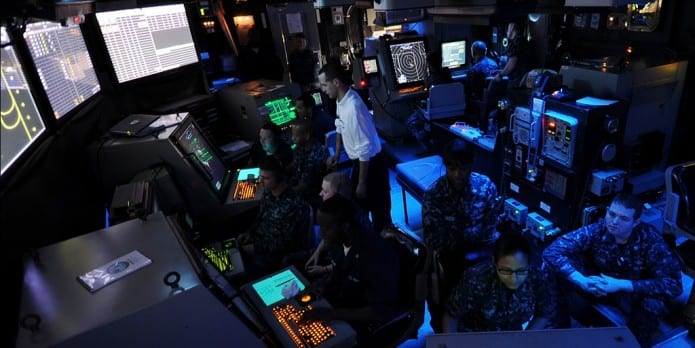Hacking fears make US Navy teach new recruits celestial navigation techniques
It has been reported this week that the United States Naval Academy situated in Annapolis, Maryland, has returned to using celestial navigation for all new recruits, teaching the use of sextants – instruments made of mirrors used to calculate angles and plot directions over computer hacking concerns.
Lt. Cmdr. Ryan Rogers, the deputy chairman of the naval academy’s Department of Seamanship and Navigation said “We went away from celestial navigation because computers are great. The problem is, there’s no backup.”
Celestial navigation was the technique used to guide ancient Polynesians in the Pacific and took Ernest Shackleton to remote parts of Antarctica. It was also used by astronauts on Apollo 12 when the craft was disabled by lightning.
However, once the United States Air Force launched the Global Positioning System (GPS) satellites, the Naval Academy stopped using celestial navigation in 1998. While celestial navigation can calculate your position within 1.5 miles, by 1995 GPS could pinpoint your location within feet, and the system has never been shut down.
Rogers told: ‘If you can use GPS, it’s just so much more accurate. We know there are cyber vulnerabilities.’
Today, the system relies on 31 satellites, which circles the Earth twice a day and costs American taxpayers about $1 billion (£650 million) a year.
“The perceived need for sextants was taken away,” said Peter Trogdon, president of nautical instrument company Weems & Plath in Annapolis, Maryland.
The sales of sextants declined after the arrival of GPS, Mr Trogdon, said “There’s only a few thousand sold a year. Most of those are sold to yachtsmen who want to have a backup.
“If you can use GPS, it’s just so much more accurate,” said Lt. Cmdr. Ryan Rogers. But, he added, “we know there are cyber vulnerabilities.”
Celestial navigation training for the fleet stopped in 2006. However, in 2011, ship navigators’ celestial navigation training was reinstated, with training only for enlisted ranks planned. Pilot programmes are also beginning for army reservists in Philadelphia, Auburn, and Rochester.
“Knowledge of celestial navigation in the GPS era provides a solid backup form of navigation in the event GPS becomes unreliable for whatever reason,” said Captain Timothy Tisch, of the US Merchant Marine Academy – which has never abandoned celestial navigation.
“It is also good professional practice to use one navigational system to verify the accuracy of another.”
The juniors were the first midshipmen to receive training this summer. Further, during an advanced navigation course, all newly enlisted sailors will have to study the stars and learn theories of celestial navigation from autumn next year. The first to graduate with the reinstated instruction would be the class of 2017.
“This is the first semester we added it in, so we’re just baby-stepping it,” said Lt. Christine Hirsch, who teaches navigation at the academy. Only three hours will be taught. “We just added the theory, but we really do have the capabilities to expand.”
Mr Trogdon said the decision was “fantastic”.
“How cool is it to go back to the ancestral technique?”

